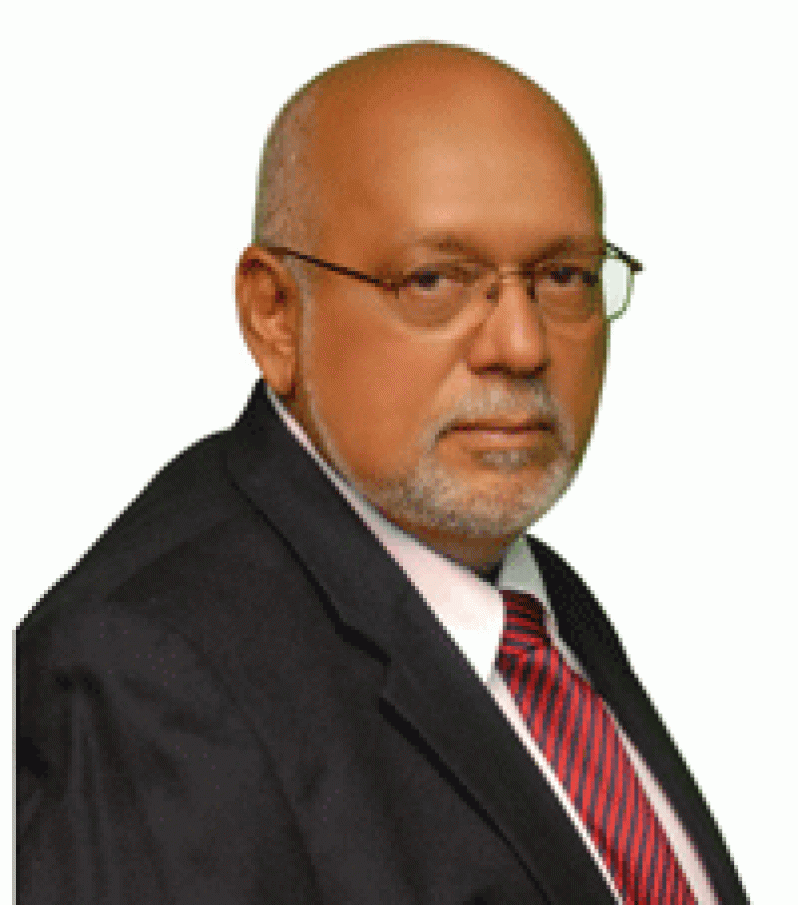PRESIDENT Donald Ramotar has said that plantation slavery was one of the most horrendous forms of tyrannical rule in modern history.
 “It was the embodiment of the worst excesses of a depraved age. Not only did one class of humans exploit and abuse another class for a period in excess of two hundred years, but, throughout its existence, the slave system brutally suppressed any and all expression of disaffection on the part of the outraged victims,” he charged.
“It was the embodiment of the worst excesses of a depraved age. Not only did one class of humans exploit and abuse another class for a period in excess of two hundred years, but, throughout its existence, the slave system brutally suppressed any and all expression of disaffection on the part of the outraged victims,” he charged.
The Head of State was speaking at the launch, last Wednesday, of the United Nations Educational, Scientific and Cultural Organisation (UNESCO) Slavery Exhibition at the National Museum, in Church Street, Georgetown.
Noting that, this year, all of Guyana is observing the 250th anniversary of the 1763 Berbice Revolt, Mr. Ramotar made reference to West Indian historian, Professor Verene Shepherd’s timely reminder during her contribution to the Distinguished Lecture Series, at the Umana Yana, also in the city, recently.
She declared:“This was no revolt, no rebellion and, most certainly, not a simple protest. It was a war and the war lasted for over a calendar year.”
In this regard, the President, alluding to the theme of the exhibition ‘Lest We Forget’, added: “We should, firstly, remind ourselves of that which we should never forget and then resolving not to forget, ever again, this evil chapter in human history.”
Inhuman extremes
Observing that enslavement was systematised cruelty, he recalled that the enslaved were virtual machines to be driven to inhuman extremes, for the production of profit and machines of an intelligent nature which had to be terrorised, chained, beaten, tortured, maimed and murdered in order that the master might secure huge profits and retain physical dominance over the abused chattel.
“And because the enslaved African was all too human, he lived for vengeance and his vengeance did not sleep. Even if we agree to discount all other forms and acts of a vengeful nature, designed to destroy the system of plantation slavery, we would still be left with the telling truth that, even with all the odds stacked against them, the enslaved African was rebellious property. Rebellions were a regular and ever-recurring phenomenon of the plantation system,” he affirmed.
President Ramotar said the 1763 Berbice Rebellion was one of those very clear instances in which the enslaved African demonstrated his undisguised rejection of enslavement. Moreover, that rebellion was only exceeded in length of time by the successful 1791 Haitian Revolution and, in so far as numbers are concerned, by the not so successful Danish St. John’s revolt of 1733.
Against this backdrop, he declared it is fitting that every Guyanese make a special effort to be a part of these commemorative activities.
“In 1763, our forefathers wrote an indelible chapter in the text book of human freedom when, for some sixteen months, they resisted the might of Europe in pursuit of their freedom,” the President recounted to the attentive gathering assembled to view the exhibits.
Very graphic
Commenting on the event being staged, he noted that there are a number of interesting things about it, apart from the visual display, which are very graphic, communicating both the pain of enslavement and the triumph of freedom.
Making comments on two of those, he said, first that it was put together to mark the United Nations General Assembly’s resolution proclaiming 2004 ‘International Year to Commemorate the Struggle against Slavery and its Abolition’, the same struggle against enslavement that is epitomised by and in the 1763 Berbice War.
Secondly, it is both themed and titled ‘Lest We Forget’, firstly reminding ourselves of that which we should never forget and then resolving not to forget, ever again, this evil chapter in human history.
President Ramotar alluded to Professor Verene Shepherd’s Lecture at the Umana Yana, in which she pondered on why history is not a compulsory subject in our schools and called for a revision of the text being used in Caribbean classrooms.
He shared Shepherd’s concern, adding:“For, if we are to remember, then, first, we must know and there is no better way of knowing than by being taught the lessons of history in the schools.”
On the issue of reparation for slaves, the Head of State recalled that, some six years ago, his predecessor, President Bharrat Jagdeo committed the Guyana Government to zealously pursuing, both within the region, at the level of CARICOM and at all international fora, the case for reparations from the slaver nations.
President Ramotar disclosed that, more recently, a colleague from across the Caribbean echoed this commitment and, right here in Guyana, a mere few weeks ago, Professor Sir Hilary Beckles called on CARICOM to make reparations an agenda item.
Taking a principled stand and making his position known on it, President Ramotar said:”I take this opportunity to reaffirm Guyana’s commitment to zealously pursue the case for reparations.
National committee
He called on Minister Frank Anthony, Professor Winston McGowan and Mr. Eric Philips, who shared the forum with him, to set up a national committee to research the case for reparations.
President Ramotar said he felt very honoured to have been invited to participate in the opening of the very august exhibition and thanked the organisers, as well as Minister Anthony, for organising the loan of the exhibits from UNESCO.
The President said he considered it a timely initiative and an historic and very serious moment for Guyanese.





.jpg)








